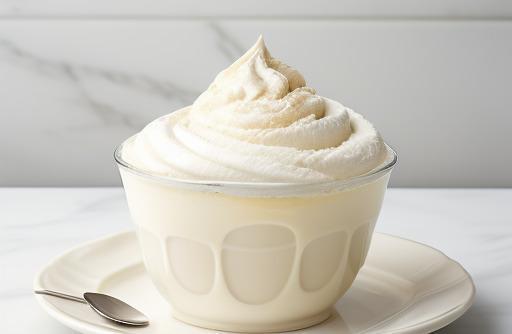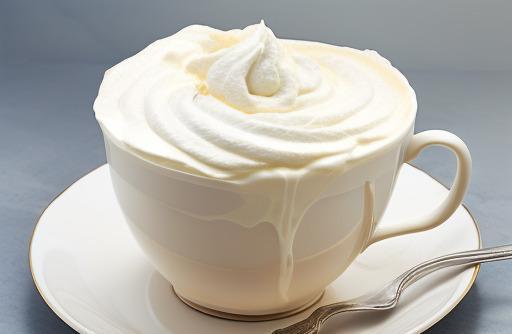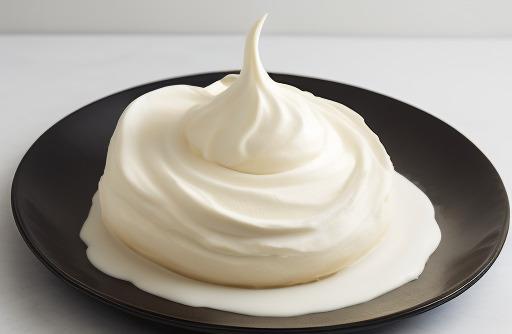- You are here:
- Home »
- Food Substitutes
- » Best Substitutes For Cream
Best Substitutes For Cream

Cream is a versatile ingredient that adds richness and smoothness to a variety of dishes, from soups and sauces to desserts and beverages. However, there may be instances when you find yourself without cream or need a dairy-free alternative. In this article, we will explore the best substitutes for cream, their uses, and how to choose the right substitute for your specific needs.
Key Takeaways
- Cream is a popular ingredient that provides richness and smoothness to dishes.
- There are various substitutes for cream, both dairy and non-dairy, that can be used in different recipes.
- When choosing a substitute for cream, consider the recipe’s requirements and desired taste and texture.
- Cooking with substitutes for cream may require some adjustments to achieve the desired outcome.
Why You Need A Substitute For Cream
There are several reasons why you might need a substitute for cream. Perhaps you have run out of cream and cannot make a trip to the store, or maybe you are looking for a dairy-free alternative due to lactose intolerance, dietary restrictions, or personal preferences. Whatever the reason, having a good substitute for cream on hand can save the day and allow you to continue cooking without compromising the flavor or texture of your dishes.
Types Of Substitutes For Cream

There are various alternatives to cream that offer similar characteristics and can be used in different recipes. These substitutes can be categorized into two main types: dairy substitutes and non-dairy substitutes.
Dairy Substitutes
If you are not lactose intolerant or following a dairy-free diet, dairy substitutes can be a great option. These alternatives are usually made from other dairy products and mimic the taste and texture of cream.
Some popular dairy substitutes for cream include:
-
Half-and-Half: As the name suggests, half-and-half is a blend of equal parts whole milk and light cream. It contains about 10-12% fat, making it lighter than cream but still providing a rich and creamy texture. Half-and-half can be a good substitute for light cream or a lower-fat version of heavy cream.
-
Whole Milk: Whole milk contains approximately 3.25% fat, making it less rich and creamy than cream but still a viable substitute in some recipes. It can work well in soups, sauces, and desserts where the creaminess is not the main focus.
-
Evaporated Milk: Evaporated milk is made by removing about 60% of the water content from regular milk. It has a thick and creamy texture, making it a suitable substitute for heavy cream in some recipes. Keep in mind that evaporated milk has a slightly caramelized flavor due to the heating process.
Non-Dairy Substitutes
For those who are lactose intolerant, allergic to dairy, or follow a vegan diet, non-dairy substitutes can come to the rescue. These alternatives are typically plant-based and offer a similar texture and taste profile to cream.
Here are some popular non-dairy substitutes for cream:
-
Coconut Milk: Coconut milk is a creamy liquid extracted from the flesh of mature coconuts. It has a rich, tropical flavor and a thick consistency that closely resembles heavy cream. Coconut milk can be a delicious substitute in both sweet and savory recipes, but keep in mind that it imparts a distinct coconut flavor.
-
Cashew Cream: Cashew cream is made by blending soaked cashews with water until smooth and creamy. This homemade alternative provides a silky texture and a mild, nutty flavor. Cashew cream works well in smoothies, sauces, and desserts where a creamy consistency is desired.
-
Soy Creamer: Soy creamer is a dairy-free option made from soy milk with added vegetable oils to mimic the rich texture of cream. It offers a neutral taste and can be used in a variety of recipes as a substitute for both heavy cream and light cream.
-
Oat Cream: Oat cream is a newer addition to the non-dairy cream substitute lineup. It is made by blending oats with water and straining the liquid. Oat cream has a slightly sweet taste and a texture similar to heavy cream, making it suitable for both sweet and savory dishes.
Best Substitutes For Cream

When it comes to choosing the best substitute for cream, it ultimately depends on the recipe and your personal preferences. Here are some recommendations for different scenarios:
-
For a lower-fat alternative: Half-and-half is an excellent choice if you want to reduce the fat content of your dish but still maintain a creamy texture. It works well in recipes that require light cream or a less rich version of heavy cream.
-
For a dairy-free option: Coconut milk and cashew cream are popular non-dairy substitutes that offer a similar richness and texture to cream. They are versatile options that can be used in various recipes, both savory and sweet.
-
For a neutral taste: Soy creamer is a good option if you prefer a more neutral flavor in your dishes. It blends well with both savory and sweet ingredients and can be used in a wide range of recipes.
-
For a nut-free option: If you have a nut allergy, oat cream is an excellent alternative to consider. It provides a creamy texture and works well in both hot and cold dishes, making it a versatile choice.
Remember that the best substitute for cream may vary depending on your specific needs, taste preferences, and the recipe you are making. It might be helpful to experiment with different substitutes to find the one that suits you best.
Choosing The Right Substitute For Cream

Choosing the right substitute for cream depends on several factors, including the recipe’s requirements, desired taste, and the final texture you want to achieve.
-
Consider the recipe: Some recipes specifically call for cream due to its specific fat content and creamy texture. In such cases, it is best to use a substitute that closely matches those characteristics. For example, if a recipe calls for heavy cream, substituting it with a lower-fat option like half-and-half may not yield the desired creamy outcome.
-
Think about taste: Each substitute for cream has its own distinct taste, and some may impart a strong flavor to your dish. Consider how the substitute will complement the other ingredients in your recipe. For example, coconut milk may work well in curries or tropical desserts but may not be suitable for a cream-based soup.
-
Texture matters: Cream provides a luxurious and velvety texture to dishes. When choosing a substitute, consider how it will affect the texture of the final product. Some substitutes may not thicken or emulsify as well as cream, so additional adjustments may be needed in the cooking process.
Cooking With Substitutes For Cream

Using substitutes for cream in cooking may require some adjustments to achieve the desired outcome. Here are some tips to keep in mind:
-
Fat content: Cream has a high-fat content, which contributes to its creamy texture and mouthfeel. When using a substitute with a lower fat content, such as half-and-half or whole milk, the final result may be less rich and creamy. To compensate, you can add a little extra of the substitute to increase the richness, or you can consider adding some butter or another fat source to enhance the creaminess.
-
Thickening agents: Cream is often used as a thickening agent in sauces and soups. If your substitute for cream does not have the same thickness, you can use alternative thickeners such as cornstarch or flour. Mix the thickening agent with water or the chosen substitute before adding it to your dish. Keep in mind that you may need to adjust the quantities based on the desired consistency.
-
Emulsification: Cream helps emulsify certain ingredients in sauces and dressings, preventing them from separating. Some substitutes may not have the same emulsifying properties, so you may need to adjust your technique. For example, when using coconut milk as a substitute, you can try blending it with other emulsifying ingredients such as egg yolks or mustard to maintain the desired texture.
-
Cooking times: Substitutes for cream may have different cooking times than cream, especially if they contain water content. Be mindful of this when following recipes, as the cooking times may need to be adjusted to avoid overcooking or curdling.
Recipes Using Substitutes For Cream

Here are a few recipes using substitutes for cream to inspire you in your culinary adventures:
Coconut Milk Curry
Ingredients:
- 2 tbsp coconut oil
- 1 onion, diced
- 3 cloves of garlic, minced
- 1 tbsp ginger, grated
- 2 tbsp curry powder
- 1 can of coconut milk
- 1 cup of vegetable broth
- 2 cups of mixed vegetables (such as carrots, bell peppers, and broccoli)
- Fresh cilantro for garnish
- Salt and pepper to taste
Instructions:
- Heat coconut oil in a large pan over medium heat. Add the diced onion, minced garlic, and grated ginger. Sauté until the onion is translucent and fragrant.
- Stir in the curry powder and cook for another minute.
- Add the coconut milk and vegetable broth to the pan and bring to a simmer.
- Add the mixed vegetables and cook until they are tender but still crunchy.
- Season with salt and pepper to taste.
- Serve the curry over steamed rice and garnish with fresh cilantro.
Cashew Alfredo Sauce
Ingredients:
- 1 cup cashews, soaked in water for at least 2 hours
- 1 cup vegetable broth
- 2 cloves of garlic
- 2 tbsp nutritional yeast
- 1 tbsp lemon juice
- Salt and pepper to taste
Instructions:
- Drain the soaked cashews and place them in a blender or food processor.
- Add the vegetable broth, garlic, nutritional yeast, lemon juice, salt, and pepper.
- Blend until smooth and creamy, scraping down the sides as needed.
- Adjust the consistency by adding more vegetable broth if desired.
- Heat the sauce in a saucepan over low heat until warmed through.
- Serve the cashew Alfredo sauce over pasta or roasted vegetables.
These recipes showcase the versatility and deliciousness of substitutes for cream, allowing you to enjoy creamy dishes even without traditional cream.
Storage And Shelf Life Of Substitutes
The storage and shelf life of substitutes for cream will vary depending on the specific substitute you are using. Here are some general guidelines:
- Dairy substitutes such as half-and-half, whole milk, and evaporated milk should be stored in the refrigerator and consumed within their expiration date.
- Non-dairy substitutes like coconut milk, cashew cream, soy creamer, and oat cream usually come in sealed containers. Once opened, any remaining product should be transferred to an airtight container and refrigerated. They are typically best consumed within a week after opening, but refer to the manufacturer’s guidelines for exact storage instructions.
It’s always a good idea to check the expiration dates and storage recommendations on the packaging of the substitute you choose to ensure freshness and quality.
Conclusion
Having substitutes for cream on hand can save the day when you find yourself without this essential ingredient or need a dairy-free option. Whether you opt for a dairy substitute like half-and-half or a non-dairy alternative like coconut milk or cashew cream, there are plenty of options to suit your needs. Remember to consider the recipe’s requirements, desired taste, and texture when choosing the right substitute for cream. With a little experimentation and some adjustments in cooking techniques, you can enjoy creamy and delicious dishes without traditional cream. Bon appétit!
Pro Tip: If you are using a non-dairy substitute like coconut milk or cashew cream in a recipe that calls for cream, try to match the fat content by adjusting the quantities. For example, if a recipe calls for 1 cup of cream, use 1 cup of the non-dairy substitute plus a tablespoon or two of a high-fat oil (e.g., coconut oil or avocado oil) to achieve a similar richness and creaminess.
FAQS
What Are Some Healthy Alternatives To Cream?
Some great substitutes for cream are coconut milk, almond milk, cashew cream, dairy-free yogurt, and silken tofu. These options have a lower fat content and can mimic the creamy texture of dairy-based cream in a variety of dishes.
How Can I Use Coconut Milk As A Cream Substitute?
Coconut milk is a versatile ingredient that can be used in both sweet and savory dishes. It can be whipped into a fluffy consistency for desserts, added to curries for a creamy finish, and even used in smoothies. When using coconut milk as a substitute for cream, make sure to use a brand that is high in fat (at least 60%) to achieve the desired texture.
Can I Use Almond Milk In Place Of Cream In Coffee?
While almond milk does not have the same creamy texture as dairy-based cream, it can still be used in coffee. It is important to note that almond milk tends to curdle when added to hot coffee, so it is best to froth the almond milk first before adding it to the coffee.
What Is Cashew Cream And How Is It Made?
Cashew cream is a dairy-free alternative to heavy cream that is made by blending soaked cashews with liquid (such as water or vegetable broth) until it reaches a smooth and creamy consistency. The resulting cream can be used in a variety of dishes such as soups, sauces, and desserts.
What Are The Benefits Of Using Substitutes For Cream?
Switching to alternative cream substitutes can offer a variety of health benefits. These substitutes often have a lower fat content, lower calories, and are lactose-free, making them suitable for individuals with dietary restrictions. Additionally, alternative creams can provide a unique flavor and texture to dishes that dairy-based cream cannot achieve.
Sources
About the Author Jenny
I'm Jenny, a housewife with an unwavering passion for food. My culinary journey began with my grandmother's kitchen, and it's now a full-fledged food blog. I've turned my love for cooking into a creative outlet, sharing recipes and stories with a global community of fellow food enthusiasts. It's proof that being a housewife can also mean pursuing your passions and savoring life's delectable moments.
